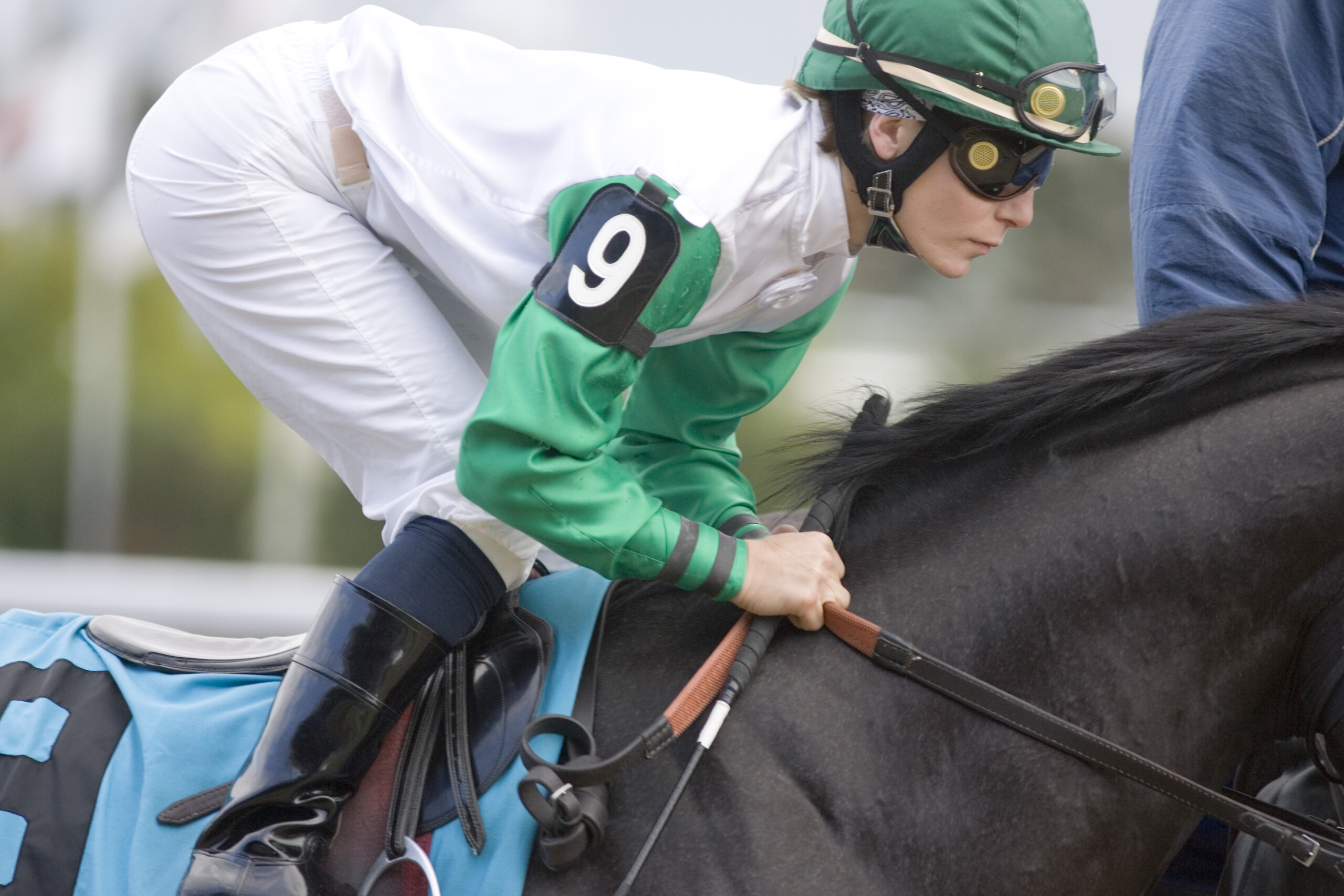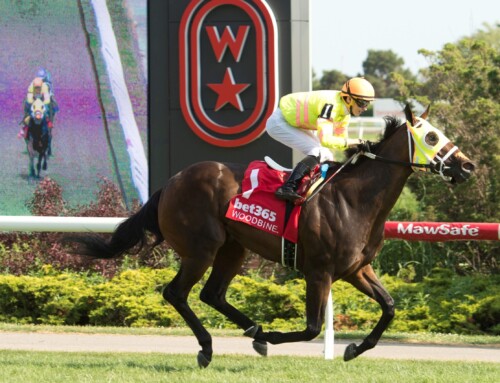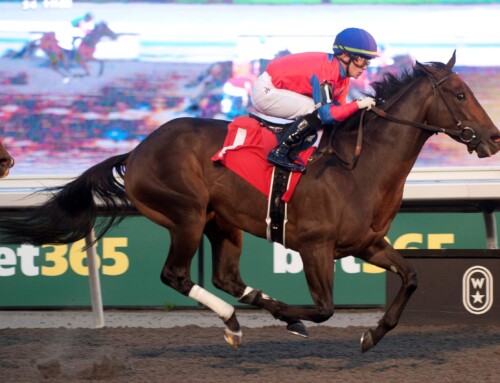by Hayley Morrison for Ontario Racing
“The race has evolved, has changed, and has been challenged as far as the various components that go into having a live show put on once of year. But it’s something we can’t take for granted. We can’t take tradition, or our identity for granted.”
Racing historian Tom Cosgrove is referring to the Plate. To be exact, the King’s Plate, which will have its 166th edition on Saturday (Aug. 16) at Woodbine Racetrack.
Since its inception in 1860, the Plate has been run continuously over three centuries. In effect, the birth of the Plate predates the creation of the lightbulb, the election of Canada’s first Prime Minister, John A Macdonald, and even the construction of the ill-fated Titanic.
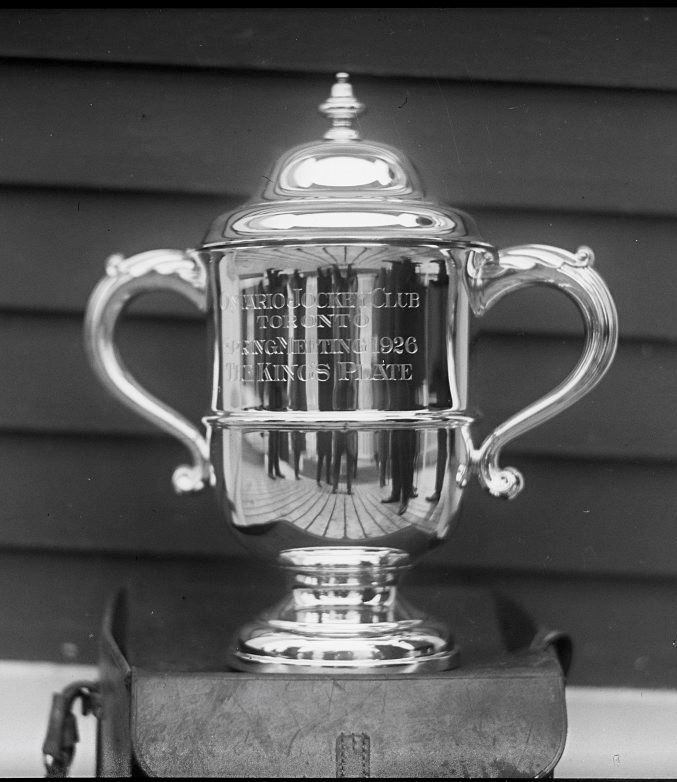
The 1926 King’s Plate trophy (City of Toronto archives)
Over the Plate’s longevity, it is people like Cosgrove that have given life to the historic and prestigious nature of this event.
From rare snippets in time, four people help us understand the importance of the 1 ¼ mile race within Canada’s rich racing history.
TOM COSGROVE: PHOTO FINISH, WAVING AT ROYALTY AND MISSING A PLATE RACE
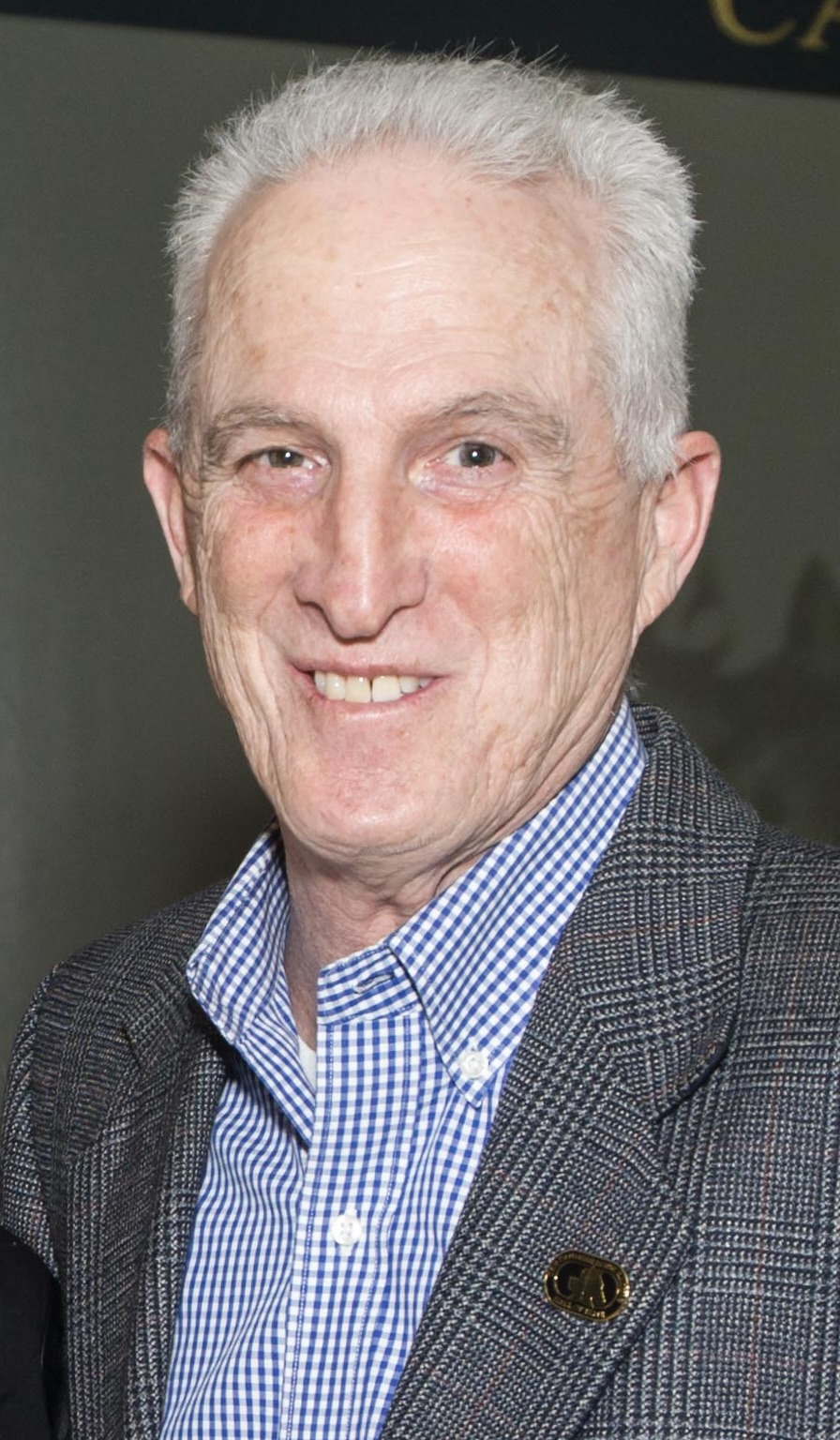
Racing historian Tom Cosgrove (Dave Landry photo)
“I can’t express what a blessing it is to tell you this story because it’s something out of a novel.”
Travelling back in time to 1989, when he was a placing judge, Cosgrove vividly recalls With Approval’s Plate win.
“Yves Loiselle, Dan Loiselle’s dad was the photo finish man at the time, and he dropped the wet photo on a close peg down from his position above us, down through an opening to us and it was still wet,” Cosgrove said. “He said, ‘Good luck, fellas,’ as he peered down at us (and) as we looked up at him. We took the photo off the peg and put it on the flat table that we had, and the distance was the width of a dime and the only reason it wasn’t a dead heat was With Approval had a grey nose and Most Valiant was a bay horse on the inside. The colour of With Approval’s nose was the difference. We could clearly see grey in front of the bay nose by the narrowest of margins you could imagine.
“We had the window open, and the tension and the electricity in the crowd below us – the mumbling and the noise was just something I had never heard before or since. And the Queen Mother was there that year also. To make it more dramatic, in those days, I was calling the race through binoculars to tell [Ed Bradley] what numbers to put up. Of course, we just put up a photo for the win. In those days we put up the numbers individually and when Mr. Bradley put up With Approval’s number the roar of the crowd was just ear-splitting.”
Trained by Hall of Famer Roger Attfield for Kinghaven Farms, With Approval also secured the next two legs of Canadian Triple Crown – the Prince of Wales Stakes at Fort Erie followed by the Breeders’ Stakes at Woodbine.
With regards to what was then the Queen’s Plate, Cosgrove’s memory of With Approval’s win speaks to a different era of the race; an era where racing fans’ excitement was tightly knit to their anticipation while waiting for a simple win photo to be developed. Today, racing fans are sporting smart phones galore, and in turn, have the instant gratification of taking an unofficial win photo from the sidelines.
Technology aside, another treasured part of Plate history has been the presence of royalty at the event. Since the very beginning, the Plate has been named for the reigning British monarch. From 1860 to 1902, the race was known as the Queen’s Plate during Queen Victoria’s reign until her death in 1901. For the following five decades, under the reign of King Edward VII, the Plate was run as the King’s Plate.
Following Queen Elizabeth’s II ascent to the throne in 1952, the Plate once again became the Queen’s Plate. It would remain a Queen’s Plate for the next 70 years until the monarch’s passing in the fall of 2022. Queen Elizabeth II attended four Plate races (1959, 1973, 1997 and 2010).
Cosgrove distinctly remembers The Queen’s third Plate visit to Woodbine. He was 25 and working for Windfields. Working beside him was Leo Davidson, who was looking after La Prevoyante for Yonnie Star.
“We went out of the barn, across the main road, up the slope, and up to the top of the turf course. Lo and behold, that’s where the Queen got out of her car right in front of us… and not where everybody thought she was going to be which is front of the reviewing stand in front of the race office. They came down 300 yards or so where we were, and she got out of the car right in front of us and we gave her the wave, and she waved to us with that royal wave that she had in the white gloves. The (Plate) winner that year was appropriately Royal Chocolate.”
Royal Chocolate was ridden to victory by jockey Ted Colangelo for Hall of Fame conditioner, Gil Rowntree.
Akin to having backstages passes at a concert, Cosgrove remains captivated by that moment in time.
“That’s a cool moment because who would expect a Queen to get out of the car on [the backstretch],” Cosgrove said. “She was on our side and Prince Phillip was on the driver’s side. And of course, the driver came around to open the door for her. She got out and I’ll never forget it, she was wearing this flower printed yellow and white patterned dress, pillbox hat and white gloves. And that was 1973. She had been in power as a Queen for 21 years at that point.”
What would a Plate be without a Queen or King, and for that matter, a Plate winner becoming a household name.
Enter Northern Dancer. Prior to his Plate run, the son of Nearctic, won the Bluegrass Stakes, the Kentucky Derby, the Florida Derby, and the Flamingo Stakes.
“I was supposed to go the 1964 renewal which of course was Northern Dancer’s year except that I got bumped out of the car last minute by my dad,” Cosgrove said. “A family friend showed up unexpectedly and wanted to go to the race.”
Bill Hartack guided Northern Dancer to the Plate victory for trainer Horatio Luro and Windfields Farms.
While Woodbine’s landscape has evolved since his Plate win, Northern Dancer’s statute remains steadfast outside the racetrack’s main entrance, greeting both new and veteran fans of the sport.
Not to be left out again, Cosgrove made sure to find himself at the 1965 Plate.
“The winner was Whistling Sea, and he was the first Canadian horse from the West to win the race,” Cosgrove said.
“What I remember about [the Plate in those days] is you had to pay admission to get into the track and the lineups to come through the turnstiles and pay as you came in were remarkable. It was a massive crowd. There wasn’t anything else other than racing going on. There we no slots, no simulcast racing or anything of that nature. It was all right there – an organic display of Canadian racing, if you will.”
Cosgrove said he thinks the cost of entry was about $1.50 or $2 in those days. Patrons also had to pay for parking.
PAUL SOUTER: FROM SELLING RACING PROGRAMS TO WINNING THE PLATE

J.P. Souter and connections of Son of Briartic in the 1982 Queen’s Plate winner’s circle at Woodbine (Michael Burns Photo)
Fan-turned-jockey Paul Souter is another individual who fondly recalls earlier editions of the Plate and certain colours associated with it.
“I have been going since I was five,” Souter said. “We were pretty street smart around 10 years old, and my dad took me all the time. I remember the Beasley colours which I rode in at some point.”
Back in 1969, Souter watched the late Avelino Gomez win aboard Warren Beasley’s Jump in Joseph.
“I remember him coming down the stretch. We would be up top, the very top where we used to hang out. We were just kids selling programs and we were fans. We weren’t at work at the track even yet.
“[We sold programs for] a quarter, and the (racing) form was a dollar… I made $15 one day; I was the man.”
From a kid selling programs to becoming a jockey, Souter’s first Plate ride was in 1978 aboard the filly, L’Alezane.
“She finished third behind Regal Embrace and Overskate,” Souter said.
In 1982, four years later, Souter was only 26 when he won the Plate with Son of Briartic for trainer Jerry G. Lavigne and owner, Paddockhurst Stable.
“Was I surprised that he won? No, I wasn’t,” Souter said. “I never took it as pressure. He was like third- or fourth choice and he hadn’t raced in a month. But when he warmed up, he warmed up really well. I felt like he could really win. I’ve still got a video of it on VHS. He was a good horse. I just enjoyed the day.
“It was a buzz. There were big outfits and everybody liked each other, mostly we all got along. That was the craziest day for me as a young person.”
To top it off, the former jock still remembers a cheeky conversation that day, as well.
“There was 33,000 people there or something and I remember one of the reporters saying, ‘When did you think you had it won?’ and I said, ‘I could hear my mom,’ and he believed me. There was 33,000 people there,” Souter said.
Souter spend over two decades as a jockey. Earlier this year, he was named the Avelino Gomez Memorial Award winner for his contribution to the sport.
EMMA-JAYNE WILSON: FROM MEMORIES OF PLATE WEEK TO MAKING HISTORY FOR FEMALE RIDERS
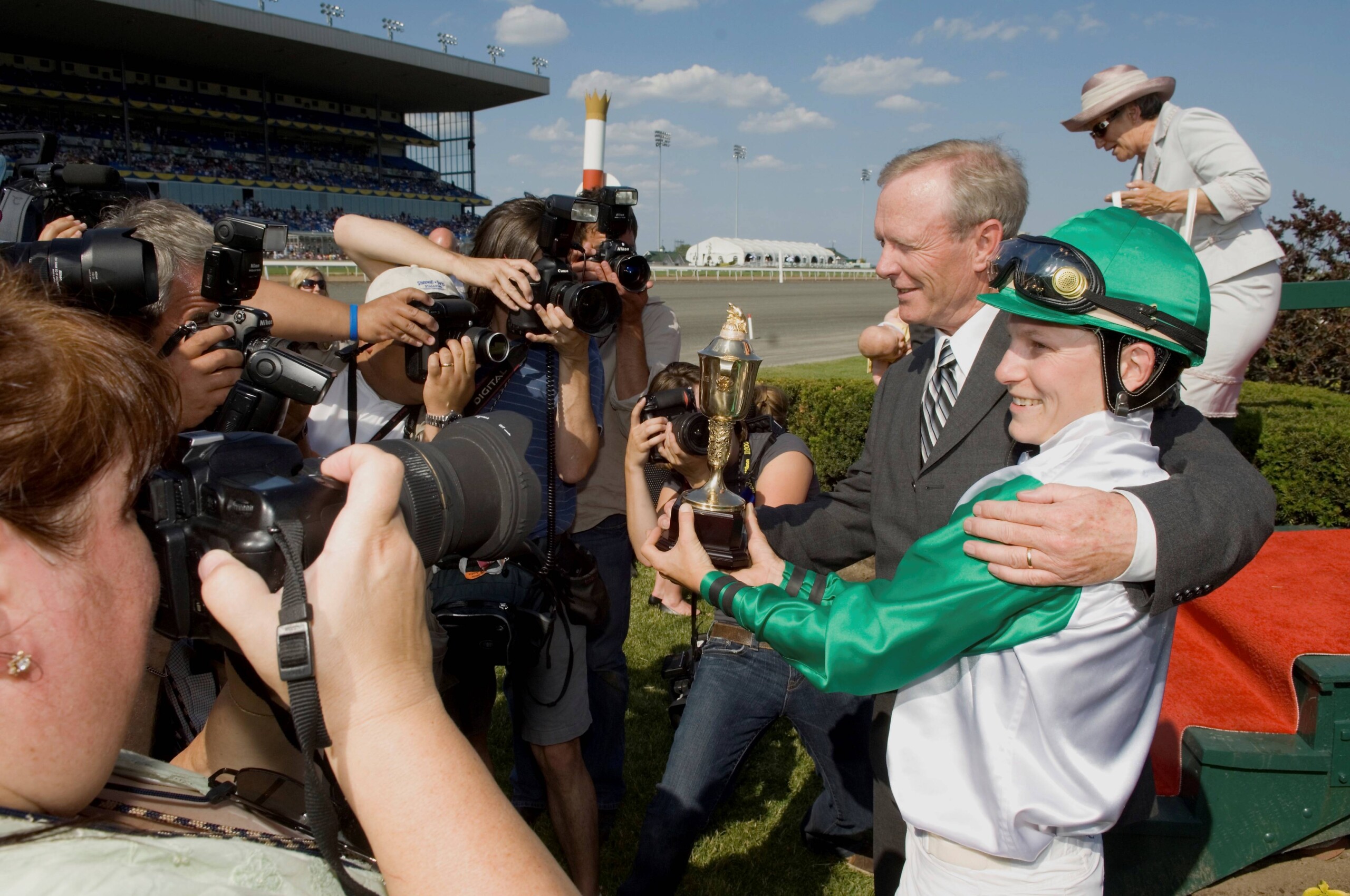
Emma-Jayne Wilson and trainer Ian Black after winning the 2007 Queen’s Plate with Mike Fox (Dave Landry photo)
In 2006, just two years into her jockey career, Emma-Jayne Wilson rode in her first Plate aboard Bridgecut. When asked about that Plate experience, Wilson is quick to mention Plate week instead of the Plate itself.
“I remember they used to bring all the horses over to the walking ring on a Tuesday and you would get your picture taken with your horse,” Wilson said. “To be part of that, not just a spectator and a fan the previous two years, but to be able to part of it and to duck under the rail and get your picture taken with… ‘my mount in the Plate.’ I remember that.”
The Plate Draw remains a steadfast tradition, with post positions determined for each Plate runner for the big race day. Aside from the draw, Wilson provided insight on what Plate week was like in the mid 2000s.
“The Plate week used to be so much more. So, the day of the draw was one thing, but they had the Plate BBQ which was like a giant media scrum. All the horses would be invited over to parade and get their picture taken. It was a nice little breakfast and cameras everywhere. Obviously, a really good schooling opportunity for some of the younger horses as well.”
Wilson and Bridgecut finished 12th in the ‘06 Plate while Edenwold took home the Plate for jockey Emile Ramsammy and Hall of Fame conditioner Josie Carroll. It was a historic win, to say the least, with Carroll becoming the first female trainer to secure the Plate.
A year later, Wilson made history by becoming the first female jockey to win the Plate aboard Ian Black trainee Mike Fox. (main image, Dave Landry photo)
“As we got around to the top of the stretch, I could see Jiggs Coz in my sights and there was a bit of weakness there and I was going to exploit it. ‘Maybe, I can catch him in the last bit. I’m just going to keep my head down and keep riding. Just keep on riding. Mike [Fox] is giving me everything, the more I ask him, the more he gives me. I’m just going to keep asking him.”
Deep within her own thoughts, Wilson recalled how the next part unfolded.
“I went by Jiggs Coz, and I was like, ‘This is pretty cool.’ These fleeting moments that happen in your head. And then, I was zeroing in on Alezzandro and (Todd) Kabel. I just thought, ‘Keep your head down and keep riding.’ The last quarter mile, to be honest, was just tunnel vision.
“To then hit the wire in front in my third year of riding races, I couldn’t believe it. I was at a loss for words, I was out of breath, I was overcome. I had just won Canada’s biggest race.”
Riding at Woodbine for over two decades, Wilson has hit many milestones since that day en route to being the highest-earning female jockey of all time.
Yet, there is a certain hold the Plate has on a rider.
“I was overwhelmed,” Wilson said. “If I could go back in time and slow it down, I would absolutely love to do that, because the fans, the attention and the horse all in that moment was just a little overwhelming. I would love to go back and relive that moment again for sure.”
MIKE KEOGH: FROM WOODCARVER TO WANDO
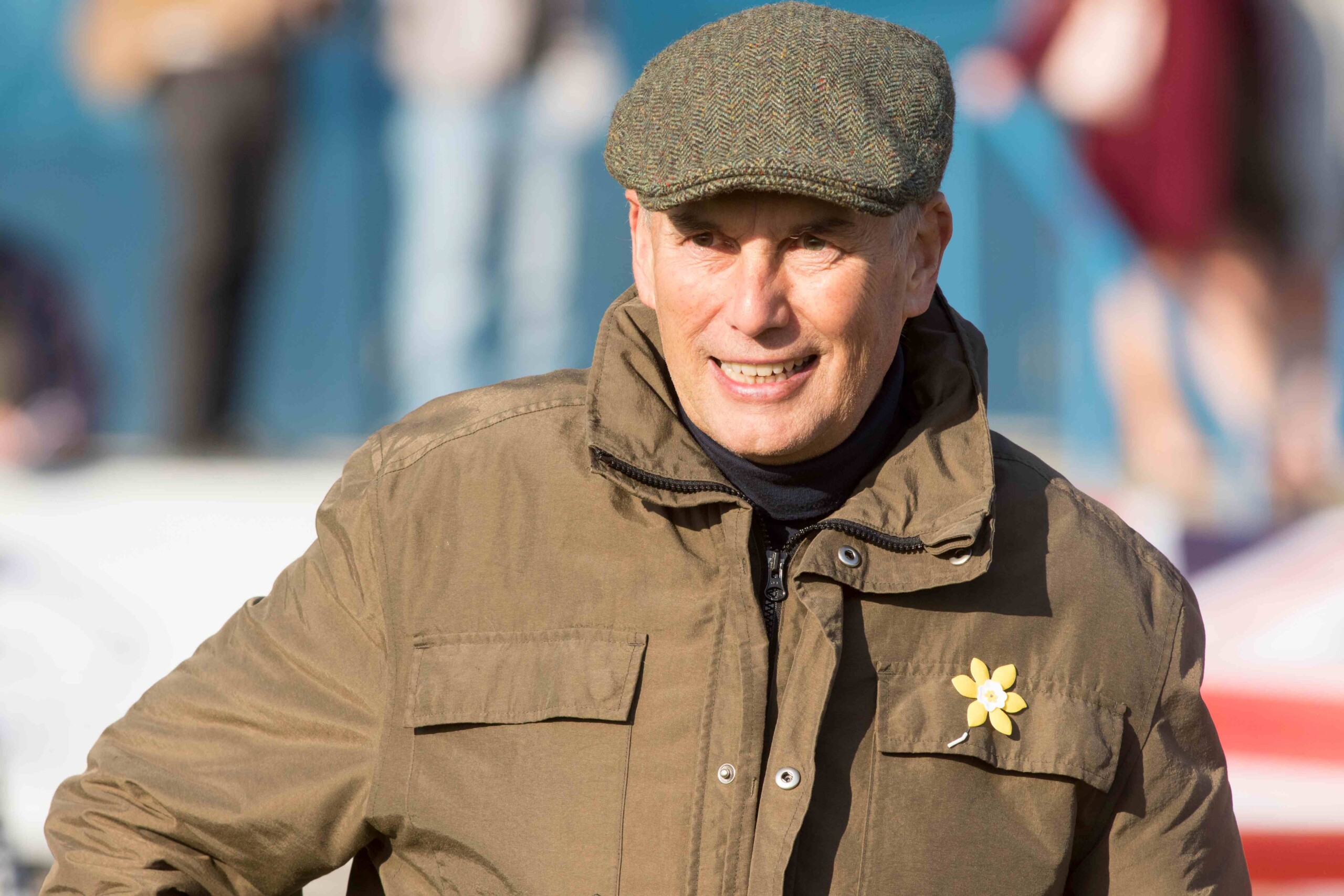
Trainer Mike Keogh (Dave Landry photo)
Over the years, Mike Keogh has experienced his fair share of Plate wins. First, while working as an assistant to Attfield, Keogh helped secure five Plate wins between 1987 and 1993 – with Market Control (‘87), With Approval (‘89), Izvestia (‘90), Alydeed, (‘92), and then Peteski (‘93).
When asked about which of Attfield’s five Plate winners stands out during that time frame, Keogh said: “Probably, Izvestia. He was just a really kind animal for a colt. I couldn’t separate him and With Approval on ability. I don’t think he could ever beat With Approval on the turf and the other way round. I don’t think With Approval could have beaten [Izvestia] on the dirt.”
Keogh remembers the Plate Day when Izvestia won.
“Elation as usual,” he said. “We always had a big party at the barn afterwards. A lot of it is after the race you can just let down and de stress. Because even as the assistant you get stressed about it because you want everything to go right at the barn.”
In total, Attfield has recorded eight Plate wins, tied with Harry Giddings, Jr. for the most in the race’s long history. Attfield’s other Plate winners were: Norcliffe (1976), Regal Discovery, (1995), and Not Bourbon (2008), as well.
Keogh went on to train and win the Plate with Woodcarver (1999) and then Wando (2003) for the late owner and breeder Gus Schickedanz. Woodcarver’s win holds a special place in his heart.
“It was wonderful for me with respect to winning the Nearctic with Clever Response and then we won the Plate,” Keogh said. “I had my mother (Vera) and father (Norman) over from England for it. It was my mother’s birthday the day Woodcarver won the Plate. It was very special.”
While not able to divulge all his silly superstitions, Keogh does admit to one specific to Woodcarver.
“I had a really good friend, he was Donnie Seymour and Robin Platts’ agent, Allan Dunn, and he had an apartment across the road,” he said. “I always went and showered and got changed in his apartment on Plate Day. After Woodcarver won the Plate, I saved my underwear and ripped off the label, so I knew which pair they were. So, I wore that to the Prince of Wales, and he got beat.”
Four years after Woodcarver, Keogh won the Plate and the next two legs of the Canadian Triple Crown with Wando. Since 2004, no other Plate winner has been able to accomplish that feat.
“The day [Wando] won the Breeders’ Stakes to win the Triple Crown I was so stressed,” Keogh said. “He was a fan favourite, so that was added stress. After it was all said and done and we got back to the barn, I just sat down on the chair on the lawn and smoked a cigarette – and I don’t smoke anymore.”
It doesn’t sound pretty, but then again, the Plate’s history is made up of raw moments, both the jubilant and stressful ones.
Today, the Plate continues to carry the weight of history behind it with people’s lived experiences at its core.
FAST PLATE FACTS
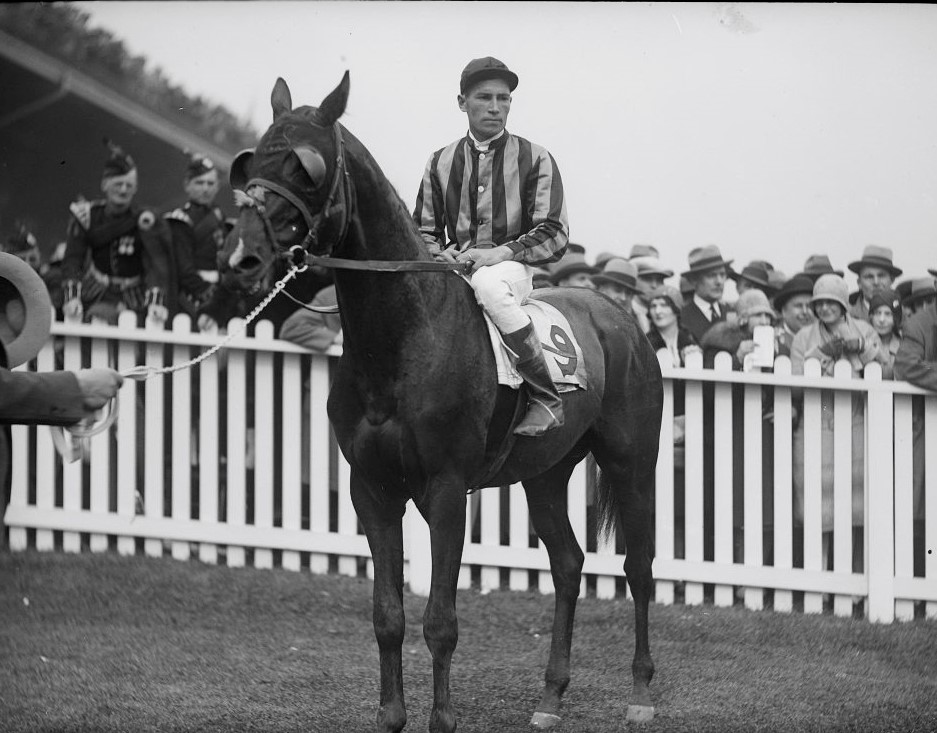
Shorelint and jockey John Mooney after winning the 1929 King’s Plate at Woodbine Park (City of Toronto archives)
The City of Toronto Archives has Plate photographs dating back to the early 20th century including King’s Plate winners Haplite (1926), Shorelint (1929), and Froth Blower (1931).
RACING AGE RESTRICTIONS: In the earliest editions of the Plate, horses could run in multiple renewals of the race. For example, King O’Connor finished second to Queensway in the 1932 Plate, but won the 1933 Plate for Seagram Stables. According to Cosgrove, the Plate became restricted to 3-year-olds in 1939.
LOCATION: As time has gone by, the Plate has also changed courses. It was originally run at Carleton Racetrack (Toronto’s Junction neighbourhood), and then at Old Woodbine (the track that later became Greenwood Raceway). The Plate has called Woodbine home for the last six, almost seven decades.
SURFACES: Over the years, the Plate has been run on multiple surfaces – dirt, poly, and currently, (all-weather) Tapeta. As Cosgrove recalled, in August 2006, Woodbine’s track surface switched from organic dirt to a synthetic polytrack. In 2016, it transitioned from poly to tapeta.
RECORD SETTERS: On Aug 21, 2022, Moira set a track record for the fastest (2:01:48) Plate win on Woodbine’s all-weather track.

